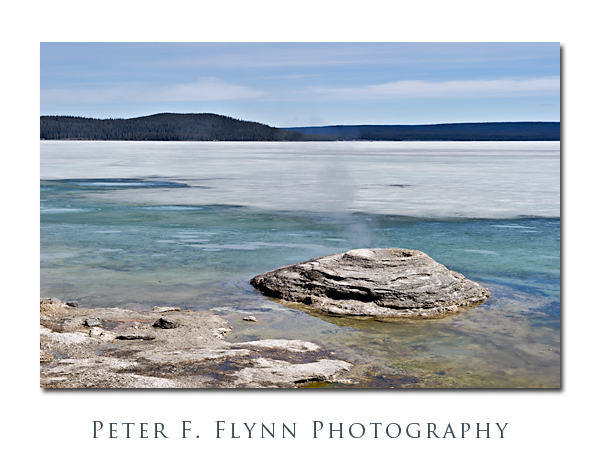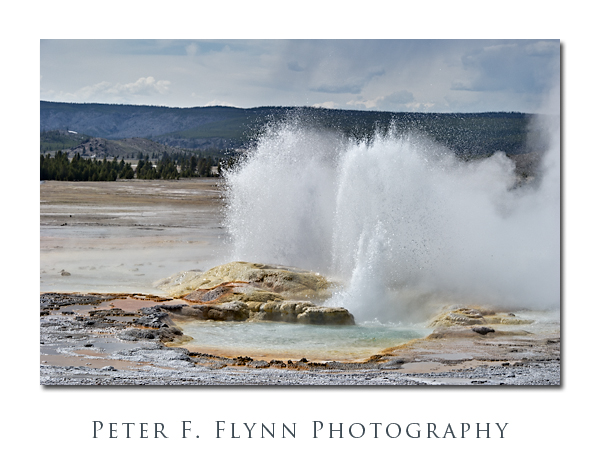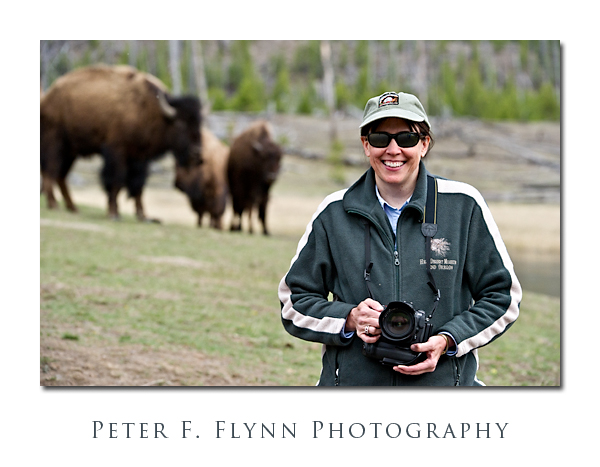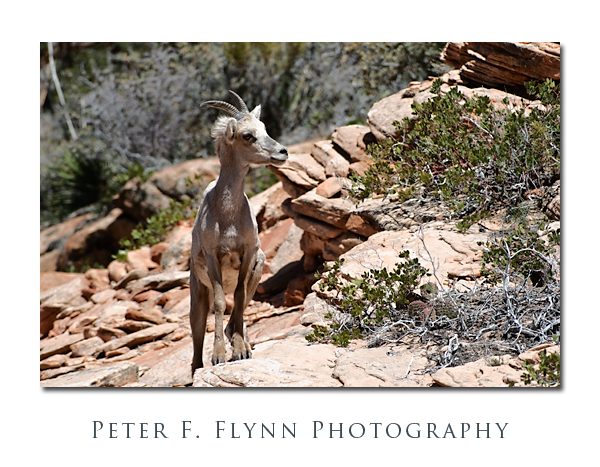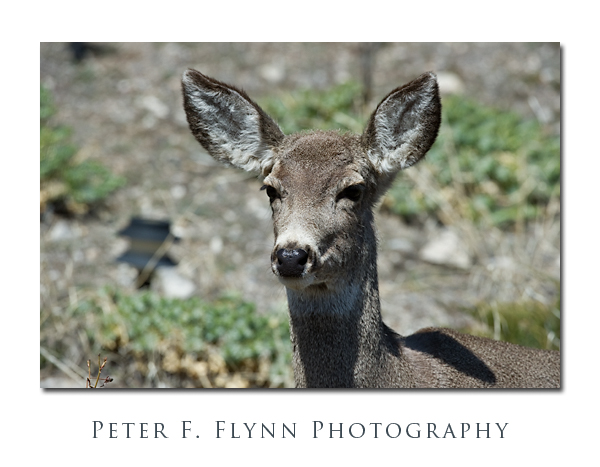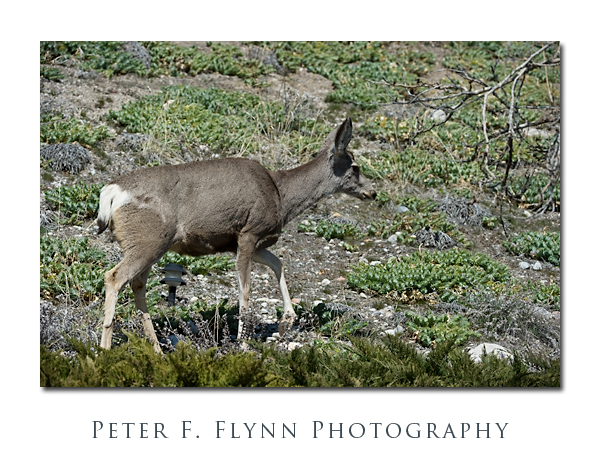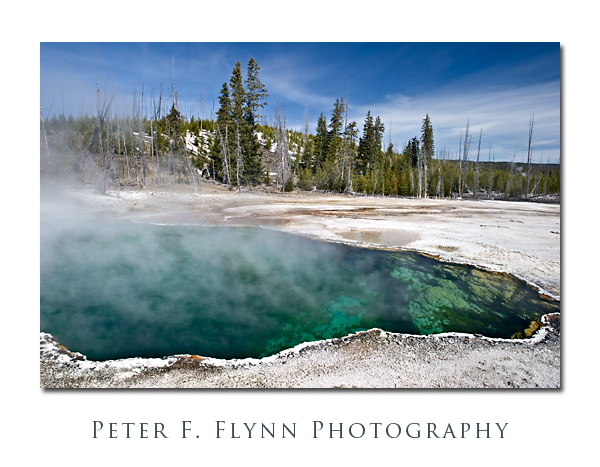 The third day of our trip to Yellowstone National Park started with a visit to the West Thumb of Yellowstone Lake. This area includes West Thumb Geyser Basin, Grant Village, and of course the eponymous extent of Yellowstone Lake. Although smaller in total area than either the Upper Geyser Basin or the Midway Geyser Basin, West Thumb Geyser Basin boasts a number of excellent thermal features including Abyss Pool and Black Pool on the northern edge of the central basin; Fishing Cone on the Yellow Lake side of the central basin; Seismograph and Bluebell Pools on the southern edge of the basin; and the springs along the center line of the basin including Surging Spring, Percolating Spring, Ephedra Spring and Blue Funnel Spring. All of these features may be easily visited over short distances along two concentric boardwalk loops.
The third day of our trip to Yellowstone National Park started with a visit to the West Thumb of Yellowstone Lake. This area includes West Thumb Geyser Basin, Grant Village, and of course the eponymous extent of Yellowstone Lake. Although smaller in total area than either the Upper Geyser Basin or the Midway Geyser Basin, West Thumb Geyser Basin boasts a number of excellent thermal features including Abyss Pool and Black Pool on the northern edge of the central basin; Fishing Cone on the Yellow Lake side of the central basin; Seismograph and Bluebell Pools on the southern edge of the basin; and the springs along the center line of the basin including Surging Spring, Percolating Spring, Ephedra Spring and Blue Funnel Spring. All of these features may be easily visited over short distances along two concentric boardwalk loops.
The image above of Abyss Pool, was recorded at 10:00 MDT on May 17, 2010, using the Nikon D3s and the AF-S NIKKOR 24-70mm f/2.8G ED lens at 24mm. Exposure was f/16 and 1/30s (+1 EV), ISO 200. Polarizer used to cut the reflection from the hot spring. Abyss Pool is a very deep and remarkably beautiful spring, unique even amongst superlative thermal features.
The image above of Fishing Cone Geyser was recorded at 10:26 MDT using the D3s and the 24-70mm standard zoom at 60mm. Exposure was f/16 and 1/50s (+0.67 EV), ISO 200. Polarizer. The origins of the name of this famous thermal feature derive from tales told by mountain men who boasted of a lake in which one could catch a fish, and then immediately dunk it into hot spring, cooking it right on the hook. As you can plainly see in the image above, Yellowstone Lake was still capped with several inches of slushy ice, and there was only about 20-50 feet of water between shore and the ice. In spite of the shortage of clear water, what was available was enough to entice otters out for a swim.
In high season the West Thumb area is extremely popular, however this early in the year you will find only minimal services, e.g., just gasoline and a small convenience store.
After visiting the West Thumb area, we backtracked northwest along the highway to visit the Midway and Lower Geyser Basin areas. Although these areas have fewer geysers, the ones that are found here are relatively active. The springs are the best in the park, and include the singly most beautiful thermal feature found anywhere on the planet, the Grand Prismatic Spring. Finally, the paint pots found here round out the roster of amazing thermal attributes that exist in this part of the caldera (I’ll try to patch in pics of both the spring and mud pots in future entries)
The image above of Spasm Geyser was recorded at 15:35 MDT using the Nikon D3s and the (new) AF-S NIKKOR 70-200mm f/2.8G ED VR II at 120mm. Exposure was f/13 and 1/1600s (+0.67 EV), ISO 1600. Polarizer.
We spent the late afternoon along the Madison River, where we were most privileged to observe bison crossing the Madison River in search of the very finest YNP graze. The image below of the HP confirms that she’s enjoying the awesome opportunity to photograph these grand animals in their natural environment. Note that the HP is sporting the D300 – shot a bunch of excellent images too- stay tuned for a guest entry.
Not only do the adult animals wander back and forth across the river at will, but calves also make the excursion. The crossing of a calf is attended by no fewer than 3-4 cows, who first nose the calf into the water, and then wade across the river on the downstream side, harboring the calf and preventing it from descending too rapidly in the current. I was completely unprepared for the sophistication with which the bison herds carry out their daily business. The composite image shown below was recorded at about 18:15 MDT using the D3s and the AF-S VR Zoom- NIKKOR 200-400mm f/4G IF-ED at 400mm. Exposures were in the neighborhood of f/11 and 1/640s, ISO 3200. No noise reduction employed in these images.
Copyright 2010 Peter F. Flynn. No usage permitted without prior written consent. All rights reserved.
